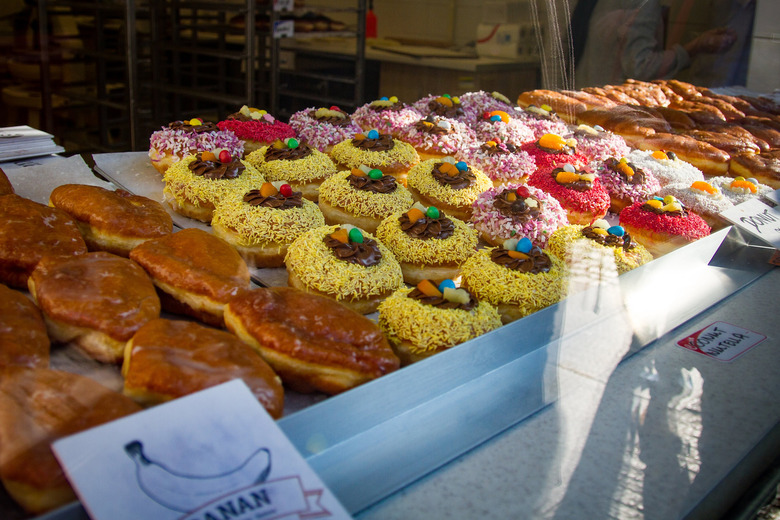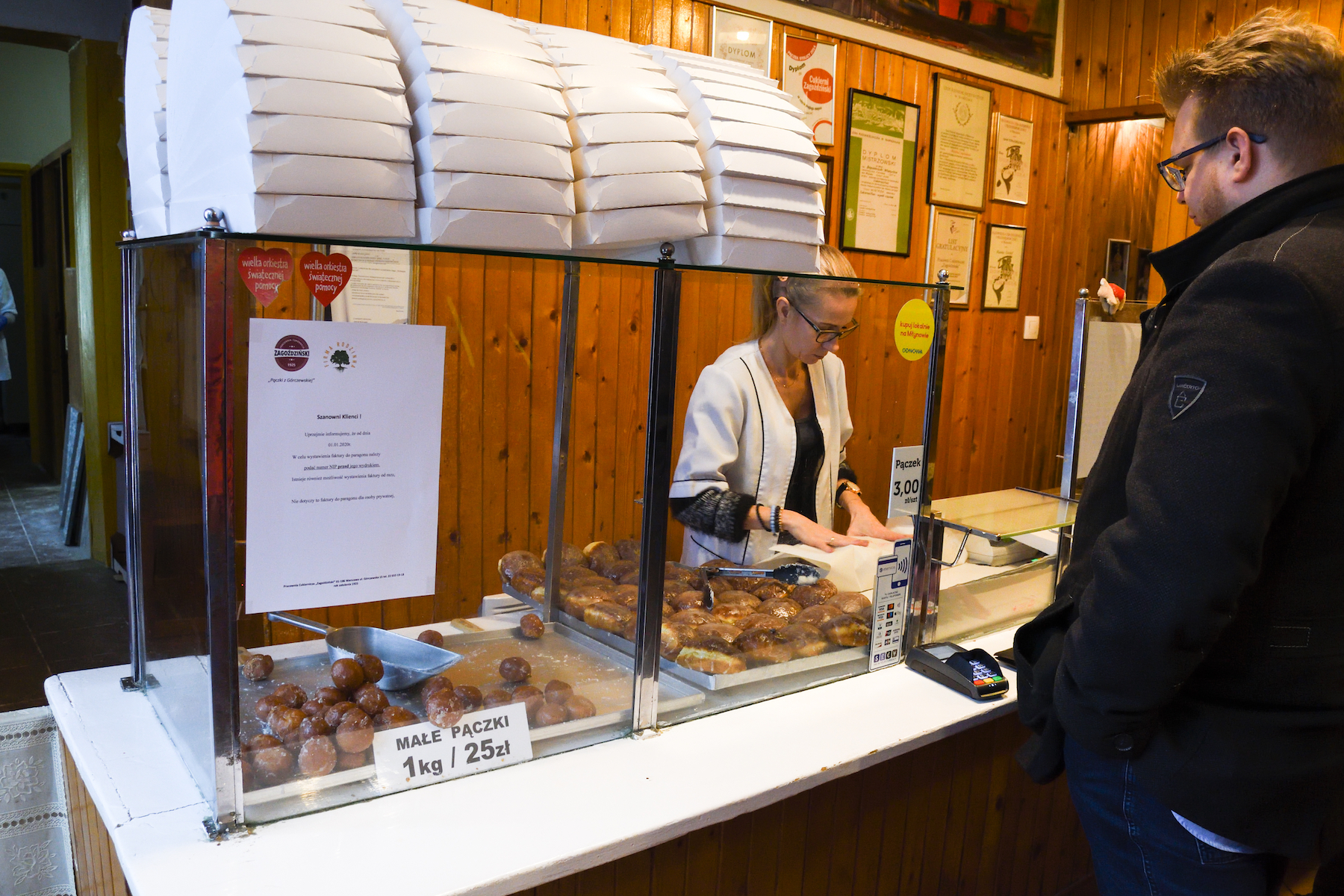Pączki: Jelly-Filled Donut Or Holiday?
The Polish pastries known as pączki have become something of a craze around Metro Detroit the day before Lent begins. Pronounced "poonch-key" or "punch-key" (depending on who you ask), they are similar to jelly donuts, but use more eggs. Polish immigrants brought the pastries with them to Detroit, Chicago, and other Polish enclaves at the turn of the last century, and the recipe has continued to develop and adapt in the years since.
For a Homemade Pączki recipe, click here.
The most common form of pączki found in Poland are the rose-flavored ones, and according to Polish Heritage Cookery, by Robert and Maria Strybel, these often come with a cherry or plum filling. In bakeries and grocery stores throughout the U.S., though, you are more likely to find raspberry, strawberry, apple, or even custard-filled pączki; perhaps to appeal to American palates. I have to admit, my favorite is actually apple, but then again, my grandma never made pączki, so I've only ever eaten the store-bought variety.
Like many fourth-generation immigrants, much of my Polish heritage is manufactured. I eat pączki because my teacher would bring them into my Polish dancing class. On the contrary, my sister does not eat them because she once ate eight of them in one day when someone brought them into her work. Despite them being known as a Polish pastry, my mother, as well as some of her friends with Polish heritage, insists that pączki are merely a media sensation, because she never ate them growing up. Despite my mother's doubts, I've learned they have been eaten widely in Poland since the 16th century.
In Poland, pączki are eaten yearlong, though most fervently on Fat Thursday, the Thursday before the beginning of Lent. In the U.S., the date moved to Fat Tuesday (otherwise known as Mardi Gras). Fat Tuesday is more often called "Pączki Day" in historically Polish areas. Either way, the idea is that the recipe uses so much lard and sugar, which were traditionally given up during the 40-day period of Lent, that none would be left in the house until Easter (a surefire way to ensure that Lenten-promises won't be broken).
In Hamtramck, Mich., a traditionally Polish, autonomous city within Detroit, a parade is traditionally held each Pączki Day, not for Mardi Gras, but for pączki themselves. So now, what was once a religious revelry has become a secular holiday dedicated to the decadent, calorie-packed food. [Of course during the pandemic such events have been cancelled and we'll be eating paczki at home instead.]
The craze for pączki has lead bakeries to start taking orders a month in advance of Fat Tuesday, and on the morning of, people will start lining up hours before the bakery opens. Shannon Vyse, a cake decorator at Paris Bakery, a Polish bakery in suburban Detroit, tells me, "We never run out on Pączki Day — we are on a constant schedule. It's quite a production. Sometimes customers will purchase extreme amounts of one flavor, and then we're down on that flavor for a few minutes... [But] it's never more than a 10- to 15-minute wait. The customers never seem to mind."
"Pączki" is colloquially used to refer to one pastry, and an "s" is tacked on when referring to multiple pastries. In Polish, however, a singular pączki is called a "pączek." Pierogi, a kind of Polish dumpling, has similarly undergone this spelling change, and multiple are usually called pierogies. I don't even know the singular form of pierogi, because, as my grandma — who hadn't spoken Polish in decades, and so probably couldn't even remember — once said when I asked, "Nobody ever eats just one."
Like with so many traditions that immigrants have brought with them to America over the years, pączki are enjoyed by people who have no Polish heritage at all, and my mom still sees them as a gimmick to entice people to visit the old bakeries in Detroit. Gimmick or not, I think they're delicious and worth seeking out.
This article was originally published in 2013


